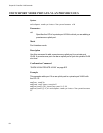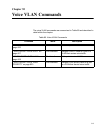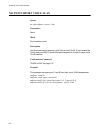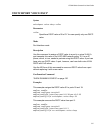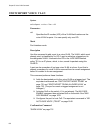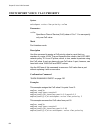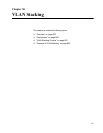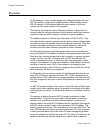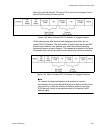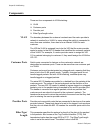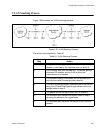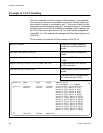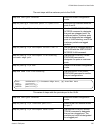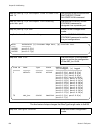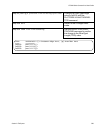
Chapter 56: VLAN Stacking
822 Section III: File System
Overview
VLAN stacking is a way to label tagged and untagged packets with new
802.1Q headers. In the case of tagged packets, which already contain
802.1Q headers, VLAN stacking adds the new headers so that they
coexist with the native headers in the packets.
This feature is intended for metro Ethernet providers. It allows them to
uniquely label the individual packets of the customer traffic they transport
over their networks, without having to delete any existing headers.
The headers consist of an EtherType value and a VLAN ID (VID). They
are added as the customer packets enter the metro network networks and
are removed when the packets reenter the customer networks. Thus, the
packets reemerge unchanged on the customer networks, making the
transition over the metro networks transparent to the customers.
VLAN stacking provides metro Ethernet providers with an alternative to
using the native 802.1Q headers to identify and separate the private traffic
flows that they transport across their public networks. In general, packets
contain, at most, one 802.1Q header with one VID that identifies the
VLAN, or broadcast domain, to which the node that generated a packet
belongs. The drawback to using native headers is that different customers
are likely to use the same VIDs in their networks. And requiring that
customers reconfigure their VLANs by assigning unique VIDs not used by
other customers is likely to be impractical.
VLAN stacking also provides a means for identifying packets that do not
have 802.1Q headers, and therefore lack VIDs. VLAN memberships of
packets without VIDs, referred to as untagged packets, are determined by
the VIDs assigned to the ports on which the packets are received on the
switches.
An 802.1Q header consists of two values. It has a VID and an EtherType/
Length value, which specifies either the protocol or the length of the data
in the payload of a packet. VLAN stacking allows you to set both of these
values.
The process of adding the extra 802.1Q header to packets is called
encapsulation. It occurs at the point when packets leave a customer’s
network, prior to entering the metro Ethernet network. In the case of
tagged packets, the extra 802.1Q header with the new EtherType/Length
and VID values is added in front of the customer’s 802.1Q header. The
resulting packets have two VIDs, referred to as inner and outer VIDs. The
outer VID belongs to the metro provider and the inner VID to the customer.
A metro provider refers only to the outer VID when transporting packets
across its network and ignores the inner VID. The outer VID resides in the
packets only while the packets traverse their network and is removed



